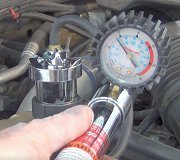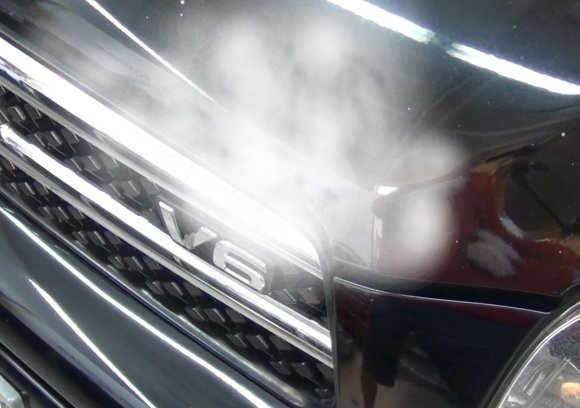Sometimes too much information just adds to the confusion. Let me clarify what I mean by "remedial repairs". Suppose the main problem was the timing belt. On some engines this is a very common failure item due to nothing more than regular wear. Typically no other parts are required to complete the repair besides the new belt. On other engines it is very rare to have a timing belt failure so when one does fail, the mechanic is going to look extra close for the cause. A weak tensioner or a pulley with worn bearings could cause the belt to track off-center and get chewed up. If the cause of the failure can be found, those are the parts that will be replaced. If no definite cause can be found, logic would dictate the belt just wore out, but the smart mechanic who knows this isn't common will be skeptical. He will likely want to replace additional parts that appear to be ok as "insurance" against the same thing happening to the new belt. He has to weigh the risk of a repeat failure, in which case he has to do the job over for free, and his reputation, against his desire to save you some money which will make him look better. In many cases it's a judgement call as to how much risk he is willing to take.
The same is true for you. You want to spend as little as possible, but not at the risk of the new parts failing again. In most cases, the mechanic is in the best position to decide what is in the best interest of each person because they understand how all the parts in an engine are related and affect each other, and he knows the common problems with various models and how to avoid them. This is one place where many do-it-yourselfers get into trouble. They can replace parts, but they don't understand how other things in the car affect their repairs.
The mechanic could do the most perfect job of replacing the belt, but if the new one has a problem, he will have to start over and perform some "remedial" repairs. This could be replacing a tensioner he didn't replace the first time, or a worn pulley, or some other cause he didn't see. Any attempt to save you some money just bit him and is costing him time and money in not being able to move on to the next job. Less experienced mechanics such as those who are fresh out of school, tend to go overboard and err on the side of caution and replace too much. As a former instructor, I was constantly sharing information on common problems when I saw those cars in the shop, but it is unrealistic for the kids to remember all that stuff. Unfortunately, the way most of us remember the mistakes is to make them. That doesn't mean they're bad mechanics; they just haven't developed the sense of what's good enough and what isn't good enough. That's where experience comes in. Anyone can be trained to be a parts replacer. A good mechanic has learned WHICH parts to replace and why.
To change gears now, your car needs the water pump. The timing belt is just a maintenance item that makes good sense because the job of replacing it is � done already. To go back and replace it in a year or two will cost just as much money and time as replacing the water pump, so in effect, you're getting two expensive repairs done at once. The tensioner, in this case, is the "insurance" that the new belt will last a long time. Some customers would argue the belt and tensioner are not needed and they are being ripped off. It is true they aren't NEEDED, but there is hardly an attempt to rip them off. This is one of the misconceptions that give this, or my other specialty, tv repair, a bad name. These are also usually the people who would complain the loudest if the timing belt failed in a few months. This is what I mean about the mechanic being in the best position to recommend which parts should be replaced.
To prevent replacing unnecessary parts, it is YOUR job to inform them of parts and services that were done recently. If the belt, for example, was replaced a few months ago, there would be no need to replace it now, but your mechanic wouldn't know that unless you told him. That's one benefit of going to a dealer. They keep records of previous service work done to your car. Many independent shops do too for their regular customers, but at the dealer, it pops up on their computers automatically. At least that's how it worked at the Chrysler dealership I worked at and at the Pontiac dealer down the road.
You're right about "rad flush". That is radiator flush. When the water pump is removed, the coolant is going to "fall out", hopefully into a drain pan. At the very least, they will just pour it back into the radiator when the new pump is installed. Antifreeze is mostly alcohol, and it will always be antifreeze, but it is usually recommended it be replaced every two years for two reasons. First of all, combustion gases, (a fancy term for exhaust gas), has a tendency to sneak into the cooling system. This is normal, but it causes acids to form in the coolant. The cooling system includes parts made from cast iron, aluminum, copper, brass, tin, and lead. Any two different metals and an acid form a battery, but instead of producing usable electricity, it causes "galvanic action", more commonly known as corrosion. Antifreeze includes additives for water pump lubricant and acid neutralizers. These additives wear out in about two years. The coolant is replaced to get the acids out and the additives in. Some shops off a service now to recycle and reuse your old antifreeze. The system neutralizes the acid and the mechanic adds a can of additives. I never got involved with that so I don't know what the advantages are.
Reusing your old antifreeze is ok if it was replaced recently. The next step up is to use new antifreeze. At least there will be mostly new additives in it and most of the acid will be gone. The better alternative, as long as they're going to go through the trouble, is to flush the cooling system. That involves forcing water through all the passages in both directions to dislodge rust, scale, and sand. When the system is just drained and refilled, there are many places for coolant to hide and not drain out. That includes the bottom of the radiator, passages in the engine, and the heater core inside the car. Flushing the system can be done anytime. It does not have to be done as part of the water pump replacement, but if you plan on having it done soon, it would be silly to have them use new antifreeze now. They don't like to see people be penny wise and dollar foolish, so consider making an appointment with them to have the flush done at a later time.
I think I would draw the line at replacing the thermostat. They have such a low failure rate, and a new one is just as likely to cause problems as an old one. They are also easy to replace later if needed. There is a risk the new gasket could leak or the housing could crack. This won't save a lot of bucks, but unless they know the thermostat is a common problem on this engine, it's best to just leave it alone.
"Coolant exchange" could be the same as a "drain and refill", but is more likely to involve refilling with new antifreeze. You can ask ahead of time or wait to see if about two gallons of antifreeze are listed on the itemized bill. A chemical flush involves adding a strong cleaner to dislodge material that could plug tubes on the radiator or heater core, then it is washed out later. This too might be overkill along with the serpentine belt. You're right about them not breaking very often. The nice thing is if the belt were to break, you can still drive the vehicle for quite a while. The battery will run down in about an hour, and you won't have power steering, but since the water pump is driven by the timing belt, the engine won't overheat.
As for the extended warranty, it's really an insurance policy. If a problem occurs related to their work or the new parts, it will likely show up in the first 90 days. What I would rather know is if they will cover additional problems caused by a failure of the new parts. A lot of smaller engines are of the "interference" design. That means the moving pistons and the moving valves occupy the same space, just not at the same time. The job of the timing belt is to keep those moving parts in the right relationship. When the belt breaks, or even jumps a few teeth, the pistons will hit the valves and bend them. Replacing bent valves involves major engine disassembly. It would be nice to know if they will take care of those repairs if the damage was caused by the work they did with the water pump / timing belt. If the additional repairs would not be covered under either warranty, I think I would skip the extra expense. If the additional repairs would only be covered with the extended warranty, it might be worth it. Be aware though that some shops make it very hard to prove damage was caused by their work and not other causes. Sometimes they're right too. It's not always easy to tell.
Caradiodoc
SPONSORED LINKS
Wednesday, March 24th, 2010 AT 6:31 AM



